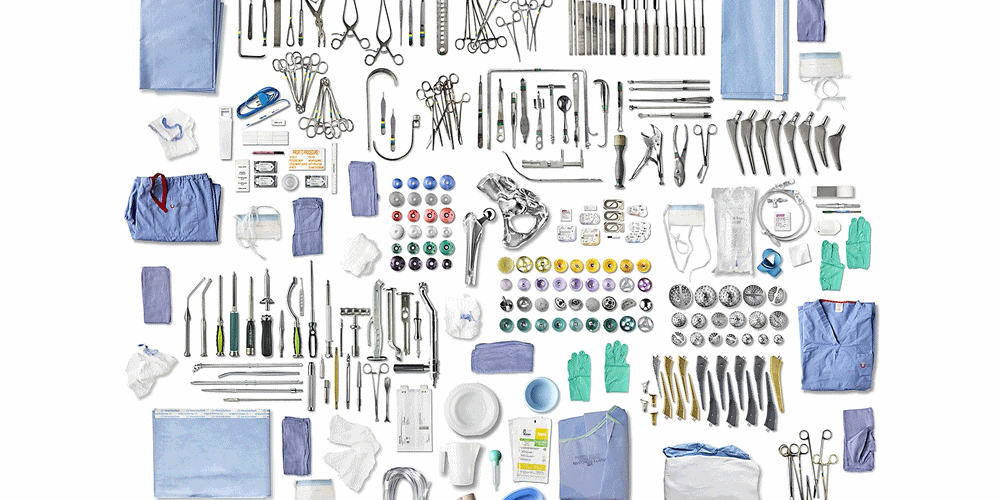Further Reading
Zac Watne explains bundled payment
Frontline Expert:
Ryan VanderWerff on the hard work of bundled care
Value Scholar:
Chris Pelt on building a career in value improvement
Proof of Concept:
How avoiding post-acute care after a joint replacement reduces complications
University of Utah Health’s first test of alternative payment methods is CMS’ bundle for hip and knee replacement. The experimentation paid off—we have reduced total episode costs and improved the outcomes.
Here is what we have learned:
1. Post-acute care is expensive
A big benefit of participating in the bundle is that CMS provided us with patient-level data for the 90 days after their surgery. For the first time, we were able to see how often our patients relied on post-acute care. Prior to this, our view of the cost of a surgery was limited. Value Driven Outcomes (VDO) , and other internal costing methods, gave visibility of our in-hospital costs—the costs of the surgery and the inpatient stay. But what happened after the patient left was unknown—a real black box.
We were able to finally see the tremendous amount of money spent for care after the patient left the hospital and the expense could even exceed the actual cost of the surgery and inpatient stay. Patients were using acute rehabilitation, skilled nursing facilities (SNF), and home health care. Each of those options, in order of decreasing costs, are expensive.
2. Discharge from the hospital to inpatient post-acute care facilities was associated with worse outcomes
Many patients and families think they will need extra help after surgery, and often request that they be able to discharge to an inpatient post-acute care facility. What they don’t realize is the possibility of medical complications, let alone the additional cost. Our internal data suggests that patients discharged to rehabs or SNFs have higher complication rates, ED visits, readmissions and reoperations. At first glance, we thought that the patients using post-acute might be sicker, less active, and less healthy and perhaps it was these factors that tipped the data towards poor outcomes. We hypothesized these might be patients with comorbid medical conditions which caused them to have higher complication rates. However, both our own internal data and national data found that whether healthy or sick, simply being admitted to one of these facilities after hip or knee replacement was an independent risk factor for having a complication!
3. Patient-centered education is the key to a good outcome
Because a rehab/SNF is both more costly and may be a risk factor for a complication for the patient, our joint replacement team created a comprehensive education program to support patients transitioning to home where they will have an improved chance of success. This effort requires a patient-specific approach. Appropriate planning can solve potential obstacles, such as living alone or having stairs in the home. The data shows that patients do better when they get back to their own environment to heal.
And to our team, this makes sense. Gone are the days of labeling these surgical patients “sick” – the patient after their total joint replacement is a “well patient” and should be cared for as such. In most cases, they are better the day after their surgery than they were the day prior to surgery with a degenerative joint.
In primary total hip and knee replacements, our new patient education program is getting patients ready to go home. We have decreased the number of patients going to post-acute care facilities from 34% to 14%, which also yielded a decrease in our readmission rates!
Following the implementation of patient-centered education, fewer patients were readmitted following a hip or knee replacement.
By engaging our patients and tailoring education to meet their individual needs, we were able to empower them to manage their recovery, reduce their post-surgical risks and save money. Value in healthcare can be realized by optimizing discharge disposition and eliminating unnecessary admissions to rehabs or SNFs following hip or knee replacement surgery.
Chris Pelt
Jeremy Gilliland
Chris Peters
Jill Erickson
Piper Ferrell
Patients will ask three things of us over the next decade of health care improvement: help me live my best life, make being a patient easier, and make care affordable. To meet those needs health care must shift—from organizing around a patient’s biology to understanding the patient’s biography.
Sometimes the most impactful change comes from simply asking, “Why are we doing things this way?” Pediatric infectious disease professor Adam Hersh explains the impact of practice inertia on antibiotic treatment in pediatric patients, and how questioning the status quo improved outcomes and reduced cost.
Utah’s Chief Medical Quality Officer Bob Pendleton describes a strategic challenge faced by many industries, including health care. We are at risk for prioritizing achievement of metrics over our purpose. He challenges us to think beyond metrics to what patients actually need from us: patient-centered, outcome-focused, affordable care.
